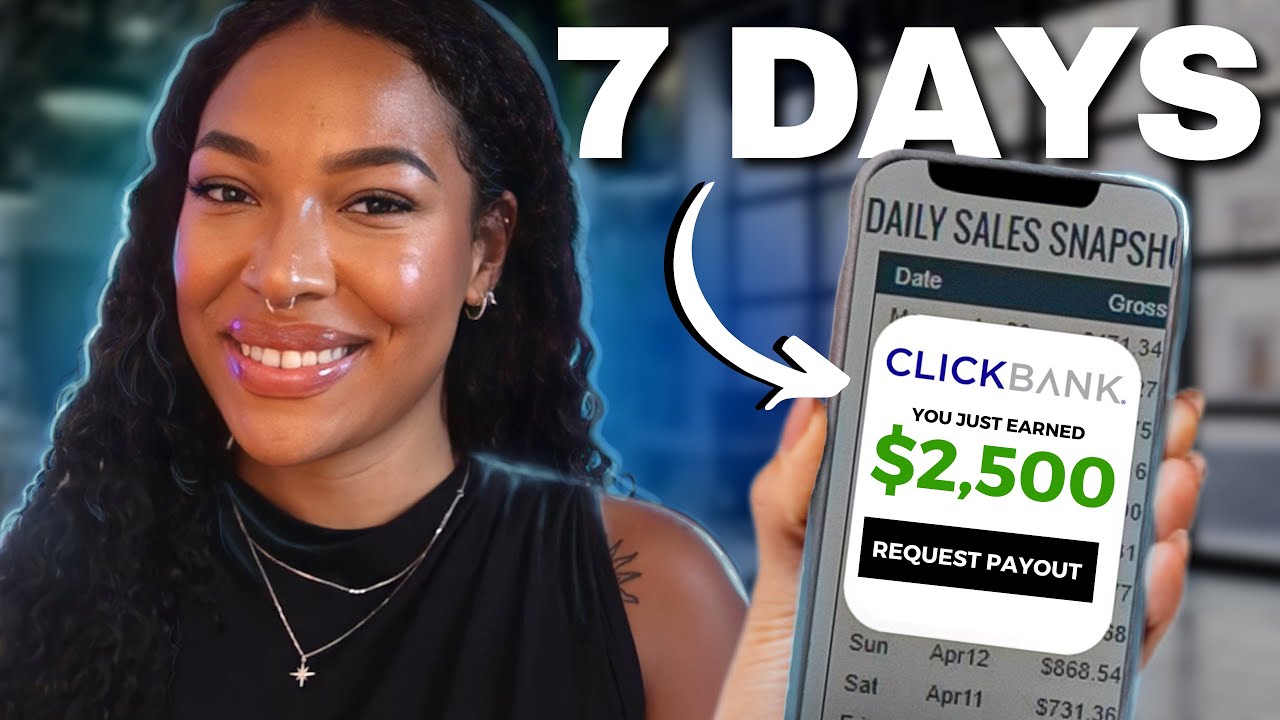Affiliate marketing is a popular online business model that allows individuals to earn money by promoting and selling other people’s products or services. It provides a great opportunity for anyone looking to generate passive income.
In this article, we will explore the basics of affiliate marketing, essential strategies for success, tips for beginners, and advanced techniques to boost your affiliate marketing income.
Key Takeaways
- Affiliate marketing is a powerful way to earn passive income by promoting other people’s products and earning a commission on each sale.
- It is essential to choose the right niche, build a strong online presence, and create valuable content that resonates with your audience.
- Essential strategies for successful affiliate marketing include selecting reputable affiliate programs, diversifying your income sources, and constantly analyzing and optimizing your performance.
- For beginners in affiliate marketing, it is crucial to focus on building trust with your audience, investing time in research and learning, and being patient as success does not happen overnight.
What is Affiliate Marketing?
Affiliate marketing is a type of marketing where you earn a commission by promoting other people’s products. When someone purchases a product through your unique affiliate link, you receive a percentage of the sale.
Understanding the basics of affiliate marketing
Affiliate marketing involves a partnership between an affiliate and a merchant. The affiliate promotes the merchant’s product through various marketing channels and earns a commission for each successful referral or sale. It is a performance-based marketing strategy that benefits both the affiliate and the merchant.
Affiliate marketing is an amazing collaboration between a partner and a business owner.
How does affiliate marketing work?
Affiliate marketing operates through the utilization of affiliate links, which are exclusive URLs given to affiliates for monitoring their promotions. Whenever a user clicks on an affiliate link and completes a purchase, the affiliate is rewarded with a commission. The affiliate link incorporates a distinctive code that identifies the affiliate and guarantees their recognition for the referral.
Types of affiliate marketing
There are various types of affiliate marketing, including pay-per-click (PPC), pay-per-sale (PPS), and pay-per-lead (PPL).
In PPC affiliate marketing, affiliates earn a commission for each click on their affiliate links.
PPS affiliate marketing rewards affiliates with a commission for each sale they generate.
PPL affiliate marketing pays affiliates for each lead they generate, such as filling out a form or signing up for a newsletter.
How Can You Make Money With Affiliate Marketing?
Getting started with affiliate marketing
To get started with affiliate marketing, you need to sign up for an affiliate program or join an affiliate network. Some popular affiliate programs include Amazon Associates, ClickBank, and Commission Junction. Once you have joined an affiliate program, you can start promoting products and earn commissions for each successful referral or sale. To kickstart your journey into affiliate marketing, you must first enroll in an affiliate program or become a member of an affiliate network.
Make money online with affiliate marketing
You can promote products through your blog or website, create informative content and include affiliate links, utilize newsletters to reach a wider audience, or leverage social media platforms to drive traffic to your affiliate offers.
By combining different strategies, you can maximize your earning potential. Additionally, you can also join affiliate networks or programs to gain access to a wider range of items or services to promote. These networks often provide resources and tools to help you optimize your affiliate marketing efforts.
Another way to make money with affiliate marketing is by creating your own digital products, such as e-books or online courses, and promoting them through your affiliate links. This way, you can earn both affiliate commissions and direct sales from your own products.
You can consider using search engine optimization (SEO) strategies to increase your website’s visibility and attract more organic traffic. This can lead to higher conversions and more affiliate sales.
To be successful in affiliate marketing, it is important to choose services or items that align with your niche or target audience. This will help you build credibility and trust with your audience, increasing the likelihood of them making a purchase through your affiliate links.
Choosing the right affiliate program
Choosing the right affiliate program is crucial to your success as an affiliate.
Consider factors such as the commission structure, product quality, conversion rate, and affiliate support. It is also important to select affiliate programs that align with your niche or area of expertise to ensure you can effectively promote and endorse the services/products.
Additionally, it is important to research and choose affiliate programs that have a good reputation and track record. Look for programs that have a history of paying their affiliates on time and have positive feedback from other marketers.
Another factor to consider is the marketing materials and tools provided by the affiliate program. Look for programs that offer a variety of promotional materials such as banners, text links, and email templates.
Moreover, having access to tracking and analytics tools can help you monitor your progress and optimize your marketing efforts.
It is also important to consider the terms and conditions of the affiliate program.
Pay attention to things like the minimum payout threshold, payment methods, and any exclusivity clauses.
Make sure the program aligns with your preferences and goals.
How do affiliate marketers make money?
As an affiliate you make money by earning commissions on sales or actions generated through their affiliate links. Each time someone clicks your affiliate link and makes a purchase or completes a desired action, you receive a commission.
You have the power to earn money by simply sharing your affiliate links. Whenever someone clicks on your link and proceeds to make a purchase or take a desired action, you will be rewarded with a commission. So, get those links out there and start seeing those earnings roll in!
Essential Strategies for Successful Affiliate Marketing
Using effective marketing tools
There are several marketing tools that can help you succeed with affiliate marketing, such as keyword research tools, email marketing software, and social media management platforms. These tools can assist with finding profitable niches, managing your affiliate links, and promoting your content to reach a wider audience.
Utilizing effective marketing tools can significantly enhance your affiliate marketing efforts. Keyword research tools, such as Google Keyword Planner or SEMrush, can help you identify profitable keywords to optimize your content and increase organic traffic.
Social media management tools, like Buffer or Hootsuite, can streamline your social media campaigns, allowing you to schedule posts and track performance metrics.

How do I add an affiliate link to my content?
To add an affiliate link to your content, you can use an affiliate link plugin or manually insert the affiliate link into your website or blog post. Make sure to disclose that the link is an affiliate link to comply with regulations.
To enhance your content with an affiliate link, employ an affiliate link plugin or manually insert the affiliate link into your esteemed website or blog post. Remember to divulge that the link is an affiliate link in accordance with regulations, striving to maintain compliance at all times.
Optimizing your affiliate links for maximum conversions
Optimizing your affiliate links is crucial for maximizing conversions. Use visually appealing call-to-actions to encourage users to click on your affiliate links. Ensure your links are prominently displayed and easily accessible on your website or blog.
You can also use link-tracking software to monitor the performance of your affiliate links, identify high-converting sources, and make necessary adjustments.
Creating valuable content to promote affiliate products
Creating valuable content is key to attracting and engaging your audience. Write informative blog posts, create engaging videos, or record podcasts that provide valuable insights and recommendations related to your affiliate products.
Focus on addressing your audience’s pain points and highlighting the benefits of the products or services you are promoting. This will establish your credibility and increase the likelihood of conversions.
The key to captivating and energizing your audience lies in producing content of great value. Craft enlightening articles for your blog, make captivating videos, or even host podcasts that offer valuable knowledge and suggestions in relation to your affiliate products.
What is the easiest way to get started with affiliate marketing?
The easiest way to get started with affiliate marketing is to find a product/service you believe in and become an affiliate for that company. You can promote their products through your website or social media platforms. Here are some simple steps to get started with affiliate marketing:
- Choose a niche:
Identify a specific area or industry that you are passionate or knowledgeable about. This will make it easier for you to find products to promote. - Research affiliate programs:
Search for companies or brands within your chosen niche that offer affiliate programs. Look for reputable and established programs that offer good commission rates. - Join an affiliate program:
Sign up for the affiliate program of the company you have chosen. Complete the registration process and provide any necessary information. - Select products/services:
Once you have joined an affiliate program, browse through the available services. Choose the ones that align with your niche and are likely to resonate with your audience. - Create promotional content:
Develop engaging and informative content that showcases the benefits or features of the products you are promoting. This content can be in the form of blog posts, reviews, tutorials, or videos. - Embed affiliate links:
Obtain your unique affiliate links from the program and incorporate them into your promotional content. These links track the sales or leads generated from your efforts, allowing you to earn a commission. - Drive traffic to your content:
Utilize your website, blog, social media channels, or other platforms to drive traffic to your content. Focus on building a targeted audience that is interested in your niche and likely to convert into customers. - Track and analyze your results:
Monitor the performance of your affiliate links and the effectiveness of your promotional efforts. Analyze which strategies are bringing in the most conversions and adjust your approach accordingly. - Optimize and scale:
Once you start earning commissions, optimize your strategies to improve conversion rates and maximize your earnings. Explore other affiliate programs, products, or services to expand your revenue streams.
Remember, success in affiliate marketing requires patience, consistency, and continuous learning. Don’t be afraid to experiment with different approaches and strategies to find what works best for you and your audience.
Do I need to create a website to be an affiliate?
While having a website can be beneficial for affiliate marketing, it is not always necessary. You can promote affiliate products through social media platforms, newsletters, or other online marketing methods.
Having a website may bring advantages to your affiliate marketing journey, but it’s not an absolute requirement. There are various avenues through which you can promote affiliate products, such as social media platforms, email marketing, or other online marketing strategies.
Don’t be discouraged if you don’t have a website, as there are plenty of other exciting options to explore!
Tips for Beginners in Affiliate Marketing
Building your online presence
Building a strong online presence is essential for success in affiliate marketing. Start by creating a professional website or blog that showcases your expertise and promotes your affiliate products. Leverage social media platforms to expand your reach and engage with your audience.
Building an email list is also important as it allows you to communicate directly with your subscribers and promote your affiliate offers. Additionally, consider creating high-quality content that is both informative and engaging.
This can include blog posts, videos, podcasts, or social media posts. By providing valuable content, you will establish yourself as an authority in your niche and attract more visitors to your website or blog.
Consistency is key when it comes to building an online presence. Regularly updating your website or blog with new content and staying active on social media will help keep your audience engaged and coming back for more. It’s important to also engage with your audience by responding to comments, answering questions, and participating in discussions.
Collaborating with other influencers or industry experts can also help you build your online presence. By guest posting on their blogs or inviting them to contribute to your website, you can tap into their audience and gain more exposure for your affiliate products.
Don’t underestimate the power of search engine optimization (SEO) to increase your online visibility. Research and implement effective SEO strategies, such as incorporating relevant keywords in your content and optimizing your website’s structure and design.
Building a strong online presence takes time and effort. Stay consistent, provide value to your audience, and leverage various platforms and strategies to maximize your success in affiliate marketing.
Finding profitable affiliate products
Research and find profitable products that align with your niche. Look for products that have high demand and offer attractive commissions. Consider the reputation of the merchant or the affiliate program and ensure they provide excellent customer support.
Choose products that you genuinely believe in and would recommend to others. Your authenticity and passion will resonate with your audience.

Avoiding common mistakes in affiliate marketing
Avoid common mistakes that can hinder your success in affiliate marketing. One common mistake is promoting too many products at once, which can overwhelm your audience and dilute your message.
Second mistake is neglecting to disclose your affiliate relationships, which is a violation of ethical guidelines and can damage your credibility. Avoid using spammy tactics or misleading marketing techniques that can alienate your audience.
Another common mistake in affiliate marketing is choosing low-quality or irrelevant products to promote. It’s important to select products that are relevant to your audience and that you genuinely believe in. Trying to sell products that you don’t truly endorse can lead to dissatisfaction and loss of trust from your audience.
Another mistake is not investing enough time and effort into building a relationship with your audience. Building trust and rapport with your audience is crucial in affiliate marketing. Simply bombarding them with promotional content without providing value or engaging with them is likely to turn people away.
Neglecting to track and analyze data is another common mistake. It’s essential to monitor the performance of your affiliate campaigns, track the success of different strategies, and make adjustments based on the data. Without this analysis, you won’t be able to optimize your marketing efforts and maximize your results.
A mistake many affiliates make is not staying up-to-date with industry trends and changes. Affiliate marketing is a dynamic field, and staying informed about the latest techniques, trends, and regulations is essential for success. Ignoring industry updates can hinder your ability to adapt and stay competitive in the market.
Advanced Techniques to Boost Your Affiliate Marketing Income
Implementing email marketing strategies for affiliate promotion
Build an email list of interested subscribers and send them valuable content and promotional offers. Segment your audience based on their interests and preferences to deliver targeted messages. Provide exclusive discounts or bonuses to incentivize conversions.
Regularly analyze your email performance metrics to optimize your campaigns and achieve higher conversion rates. Here are some steps to effectively use newsletters to promote affiliate products:
- Build an email list:
Offer a sign-up option on your website or landing page, where interested individuals can subscribe to your email list. You can also use lead generation tools or collaborate with other bloggers or influencers in your niche to grow your list. - Provide valuable content:
Send regular newsletters or emails with valuable content related to your niche. This can include informative articles, tips, tutorials, or industry news. This helps to build trust with your subscribers and establish your credibility as an expert. - Offer exclusive promotions:
Create special offers or discounts on products for your email subscribers. Make them feel like they are getting a special deal that is not available to the general public. This can include limited-time discounts, buy-one-get-one offers, or exclusive bonuses. - Segment your audience:
Divide your email list into different segments based on their interests and preferences. This allows you to send targeted messages that are more relevant to a specific group of subscribers. For example, if you have a fitness blog, you can segment your list into groups interested in weight loss, muscle building, or nutrition. - Personalize emails:
Use personalization techniques to make your emails feel more personalized and engaging. Address your subscribers by their first name, recommend products based on their previous purchases or browsing history, and use dynamic content that can be customized for each subscriber. - Analyze email performance metrics:
Regularly track and analyze your email performance metrics to assess the success of your campaigns. Metrics to analyze include open rates, click-through rates, conversion rates, and unsubscribe rates. Use this data to optimize your campaigns and improve your marketing strategy. - Test and optimize:
Continuously test different elements of your email campaigns, such as subject lines, call-to-action buttons, or email layouts. A/B testing can help you identify what works best for your audience and improve your conversion rates. - Follow email marketing best practices:
Ensure that your emails comply with best practices, such as obtaining consent from subscribers, providing an option to unsubscribe, and using a reputable email service provider.
Also, ensure that your emails are mobile-friendly, as a significant portion of users now access emails on mobile devices.
By implementing these strategies, you can leverage the power of newsletters to promote products effectively and drive higher conversions.

Increasing your conversion rate through effective call-to-actions
An effective call-to-action (CTA) can significantly improve your conversion rate. Use compelling and action-oriented language in your CTAs to encourage users to take the desired action, such as “Buy Now” or “Sign Up Today.”
Place your CTAs strategically within your content or on your website to capture the attention of your audience. Test different CTAs to determine which ones resonate best with your audience and yield the highest conversions. Here are some additional tips to create an effective call-to-action:
- Keep it clear and concise: Use short and straightforward phrases that clearly communicate what you want the user to do.
- Create a sense of urgency: Use words like “Limited Time Offer” or “Don’t Miss Out” to create a sense of urgency and encourage immediate action.
- Offer incentives: Provide an extra incentive to encourage users to take action, such as offering a discount or a free trial.
- Make it visually appealing: Use contrasting colors, bold fonts, and visually appealing buttons to make your CTA stand out on the page.
- Use first-person language: Addressing the user directly with words like “Start My Free Trial” or “Download My Guide” can create a personal connection and increase engagement.
- Consider placement: Place your CTAs in prominent locations on your website, such as above the fold or at the end of a blog post, where users are more likely to see and click on them.
- Test and track performance: A/B test different CTAs to see which ones perform better and generate higher conversions. Continuously track and analyze the results to optimize your CTA strategy.
Remember, a strong CTA can be the deciding factor between a user merely browsing your website and converting into a customer or lead.
Exploring different affiliate programs for additional income streams
Don’t limit yourself to a single affiliate program. Explore and join different affiliate programs that align with your niche or target audience.
Diversifying your income streams can increase your earning potential and protect you from relying solely on one program.
Consider high-ticket affiliate programs that offer higher commissions or recurring payments, as they can significantly boost your affiliate marketing income.
Unleash your potential by expanding your horizons and joining multiple affiliate programs that resonate with your specific niche or desired audience.
Summary
Affiliate marketing can be the key to unlocking your earning potential. By becoming an affiliate marketer, you have the opportunity to earn money while promoting products that align with your interests and passions.
From finding the right niche to building a strong online presence, this guide has everything you need to know to achieve success in the world of affiliate marketing.
Don’t wait any longer to start living life on your own terms. Take control of your income by diving into the world of affiliate marketing today!
Remember, the only way to guarantee your success is by taking action.
Commonly Asked Questions (FAQ)
You can track the performance of your affiliate links by using affiliate marketing tools such as Thirsty Affiliates or Google Analytics. These tools allow you to see how many clicks your affiliate links receive and how many conversions you generate.
The time it takes to start making money as an affiliate marketer can vary. It depends on factors such as the quality of your content, the size of your audience, and the demand for the products you are promoting. With consistent effort and effective marketing strategies, you can start earning commissions within a few months.
To become a successful affiliate marketer, focus on creating high-quality content that provides value to your audience. Select products that align with your niche and target audience. Promote your content through various marketing channels. Stay consistent, track your results, and continuously optimize your strategies.









